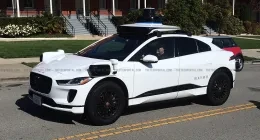Sales for Microsoft’s AR headset – the HoloLens have already hit four digit numbers. Witnessing the mass popularity VR media has gained, developers are now determined to further augment the real world rather than just entering the virtual one. Kenny W. is one such developer, who has been building games in the augmented and virtual realm.
Kenny keeps on updating the world about the progress of his projects via his YouTube account. He recently streamed a demo video of the popular puzzle adventure, Portal, through Microsoft’s HoloLens headset. And man, it looks exciting!
He has been successful in porting a basic rendering of Valve’s wildly popular first person puzzle-shooter Portal on to Microsoft’s augmented reality hardware. Independent studios have already presented Valve’s Portal inside virtual reality but Kenny has taken the concept another step further by rendering the game using augmented reality in the real world.
The video shows how a player can easily cast orange-and-blue portals on any surface, thus minimizing the need of tossing the companion cube into an incinerator. A player can directly roll the cube into a casted portal and the same will teleport within your surroundings. The video further shows how the cube recognizes stair-slopes and falls accordingly itself. Though the video reveals how exciting it is to play an adventure game into mixed reality, it is still to develop entirely.
Kenny commenting on his progress told The Next Web,
Getting the basic game mechanics working on the HoloLens was a seemingly simple matter of re-building the game inside the developer-friendly Unity engine. All we need now is for someone to tie the VR and AR versions together into one incredibly confusing shared reality.
This is not the first game, Kenny has gotten his hands on, he had previously tried AR tricks on several other games. Just last November, the game-maker posted a demo displaying smash hit game Pokemon Go inside AR. Talking about Portal, he further added,
The project itself was developed in the Unity 3D engine, which is fully supported by the HoloLens.
The Tech Portal is published by Blue Box Media Private Limited. Our investors have no influence over our reporting. Read our full Ownership and Funding Disclosure →






